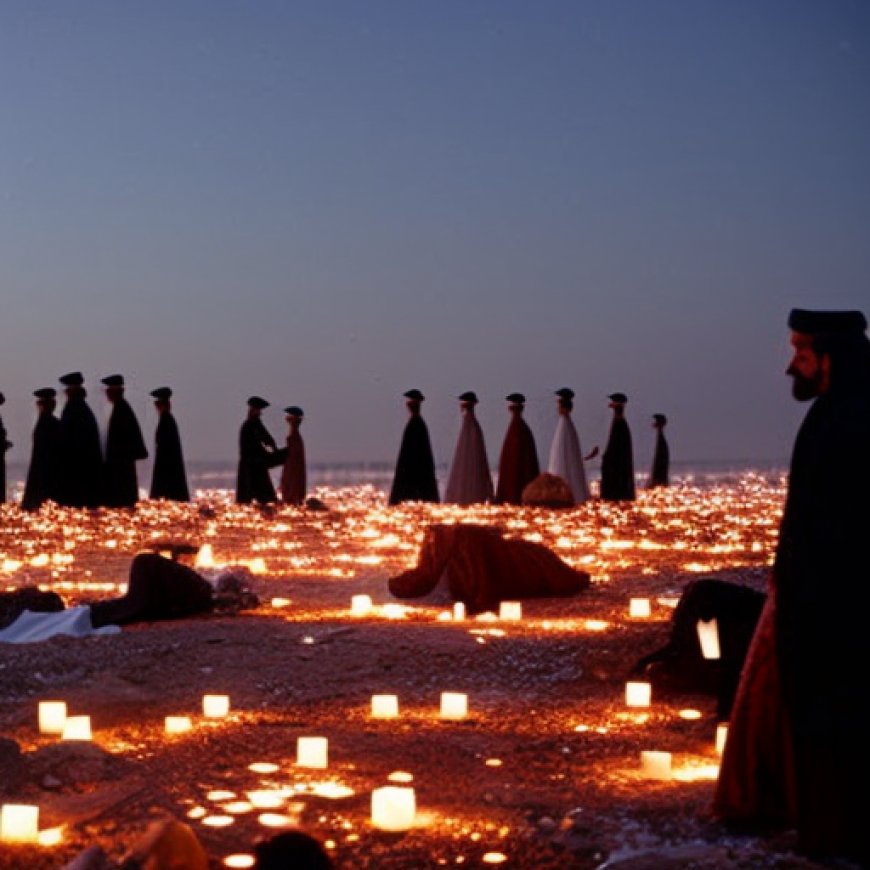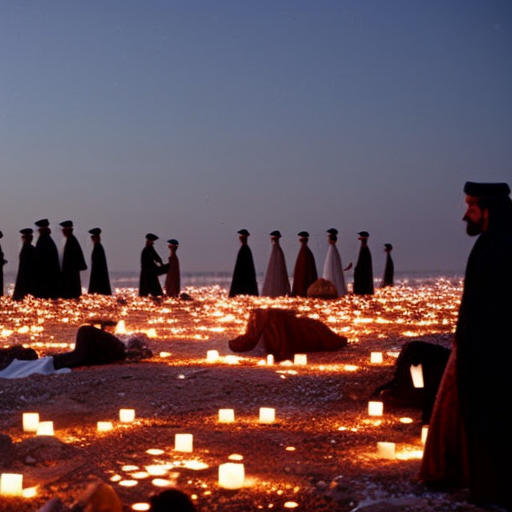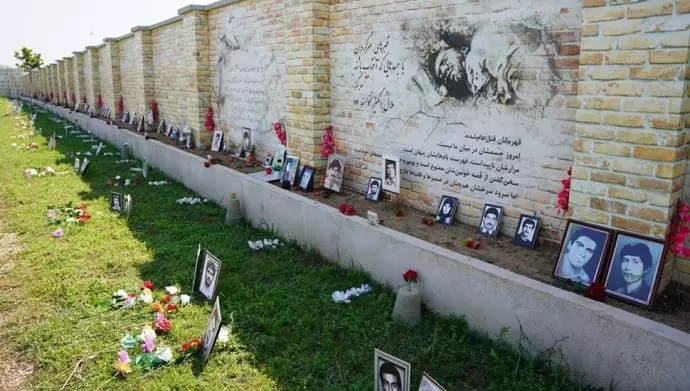Why Iran’s 1988 massacre is a crime against humanity |
Why Iran's 1988 massacre is a crime against humanity | The People’s Mojahedin Organization of Iran (PMOI)


The 1988 Massacre in Iran: A Crime Against Humanity

In the investigation of the 1988 massacre and the reports of prisoners being relocated with gross violations of human rights, such as “physical and psychological torture” using various inhumane methods, as well as “systematic execution and crimes” against prisoners, we encounter two characteristics of crimes against humanity.
In the ethical teachings of Socrates, Plato, Aristotle, St. Augustine, and St. Thomas Aquinas, natural rights are synonymous with justice, and the violation of these rights is considered a crime. International law, which is derived from these teachings, asserts that in any crime, anywhere in the world, it is humanity that is harmed. In other words, crimes have global implications. Based on this understanding, international criminal courts were established in Nuremberg, Tokyo, Rwanda, and Yugoslavia to prosecute crimes against humanity.
What are crimes against humanity?
A crime against humanity refers to violent acts that undermine human dignity. It includes state-sponsored oppressions to eliminate dissenters. It is also applied to extensive operations aimed at the extermination of specific groups. In other words, it involves systematic actions committed by perpetrators to destroy a group, involving torture, indignity, political, racial, or religious killings. Massacres, group extermination, enslavement, forced exile, persecution, political, racial or religious killings, as well as internal and state-sponsored political and governmental killings of people within a country and other inhumane act, all fall under the category of crimes against humanity.
Initially, crimes against humanity were considered part of war crimes. The Armenian genocide in 1915 changed this perspective. Since then, crimes against humanity have been distinguished in the Nuremberg and Tokyo Charters and later in the courts of Yugoslavia, Rwanda, and the International Criminal Court.
Four criteria determine the classification of a crime as a crime against humanity:
- The crime is committed as part of a widespread or systematic attack, affecting many victims.
- The attack targets a civilian population. In this definition, even if among 100 individuals, 10 are military personnel, they are still considered civilians under the definition as long as they were not engaged in armed conflict.
- The attack is carried out pursuant to a state or organizational policy.
- The perpetrators are aware of the crime being committed and are fully aware of their actions.
With this definition, the killing of 30,000 defenseless political prisoners in the summer of 1988 is considered a crime against humanity in every aspect. In the summer of 1988, a systematic and planned massacre by the government was carried out with the aim of exterminating political prisoners, resulting in 30,000 executions. These individuals, during the mass executions, were not military personnel. Some of them had been through so-called state courts and served their sentences.
This massacre was conducted with a clear plan, program, and policy based on a fatwa issued by then–regime supreme leader Ruhollah Khomeini. Hence, its scope not only affected the prisoners of the 1980s, not just political prisoners in general, not just the Iranian generation(s), but it wounded all of humanity. It has far-reaching consequences.
Conformity of the 1988 massacre with the criteria of crimes against humanity
Based on the issued order, political prisoners have been collectively executed under the charges of supporting or being members of the People’s Mojahedin Organization of Iran (PMOI/MEK), and due to their allegiance to their beliefs:
1- The 1988 massacre was part of a widespread or systematic attack and resulted in the death of 30,000 victims. It was premeditated, and the highest authorities of the ruling regime, including Khomeini himself, were informed and approved its implementation. In clearer terms, it was not a reaction to a military operation by the MEK or an ordinary feud that occurred in regular conflicts. Instead, it displayed distinct organization, systematic planning, and continuity.
2- This attack targeted individuals who were not engaged in armed confrontations. According to the statements of religious jurists and prosecutors of this regime, the verdict for those arrested on the scene of armed clashes was execution on the spot, and the case did not proceed to prisons or formal courts.
Verdicts and quotes
Mohammadi Gilani, the religious judge under Khomeini in the 1980s ordered:
“A mohareb (an enemy of God) cannot have his repentance accepted after arrest. The punishment is the same as determined by the Quran. They should be killed in the most severe way, hanged in the most embarrassing manner. Their right hand and left foot should be amputated. Islam allows the arrest of those who engage in armed demonstrations on the streets and shoot them on the spot, right there next to the wall. According to the principles of jurisprudence, it is not necessary to bring them before a fair trial. Since they were mohareb… Islam does not allow the wounded bodies of these criminals to be taken to hospitals; they should be executed. Islam allows it, even if they lose their lives under torture, nobody is held accountable, as it is Imam’s fatwa.”
Hossein Moussavi Tabrizi, the prosecutor of revolutionary courts in the years 1981 to 1984: “One of the decrees of the Islamic Republic is that anyone who stands against the state and its righteous Imam must be killed. Their captives must be executed; their wounded must be wounded even more severely until he is killed.”
3- The 1988 massacre was carried out to implement the regime’s policy of annihilating its political and ideological opponents. This policy continues to this day.
Khomeini speaks in such a general manner about his opponents and the MEK that it seems they have no human rights, and their punishment is an eternal and everlasting harsh retribution, including dreadful tortures and death:
“Opposition to this government is opposition to the divine law; uprising against the divine law. Uprising against the government based on divine law has its punishment in our law, in our jurisprudence, and its punishment is severe. I warn those who imagine that they
SDGs, Targets, and Indicators
SDGs
- SDG 16: Peace, Justice, and Strong Institutions
Targets
- Target 16.1: Significantly reduce all forms of violence and related death rates everywhere
- Target 16.3: Promote the rule of law at the national and international levels and ensure equal access to justice for all
- Target 16.4: By 2030, significantly reduce illicit financial and arms flows, strengthen the recovery and return of stolen assets, and combat all forms of organized crime
- Target 16.10: Ensure public access to information and protect fundamental freedoms, in accordance with national legislation and international agreements
Indicators
- Indicator 16.1.1: Number of victims of intentional homicide per 100,000 population, by sex and age
- Indicator 16.3.1: Proportion of victims of violence in the previous 12 months who reported their victimization to competent authorities or other officially recognized mechanisms for the prevention and redress of crime and violence
- Indicator 16.4.1: Total value of inward and outward illicit financial flows (in current United States dollars)
- Indicator 16.10.1: Number of verified cases of killing, kidnapping, enforced disappearance, arbitrary detention, and torture of journalists, associated media personnel, trade unionists, and human rights advocates in the previous 12 months
Analysis
1. Which SDGs are addressed or connected to the issues highlighted in the article?
The issue highlighted in the article is the 1988 massacre in Iran, which involved gross violations of human rights and crimes against humanity. The main SDG connected to this issue is SDG 16: Peace, Justice, and Strong Institutions. This goal aims to promote peaceful and inclusive societies, provide access to justice for all, and build effective, accountable, and inclusive institutions at all levels.
2. What specific targets under those SDGs can be identified based on the article’s content?
Based on the content of the article, the following targets under SDG 16 can be identified:
- Target 16.1: Significantly reduce all forms of violence and related death rates everywhere
- Target 16.3: Promote the rule of law at the national and international levels and ensure equal access to justice for all
- Target 16.4: By 2030, significantly reduce illicit financial and arms flows, strengthen the recovery and return of stolen assets, and combat all forms of organized crime
- Target 16.10: Ensure public access to information and protect fundamental freedoms, in accordance with national legislation and international agreements
3. Are there any indicators mentioned or implied in the article that can be used to measure progress towards the identified targets?
Yes, there are indicators mentioned or implied in the article that can be used to measure progress towards the identified targets:
- Indicator 16.1.1: Number of victims of intentional homicide per 100,000 population, by sex and age
- Indicator 16.3.1: Proportion of victims of violence in the previous 12 months who reported their victimization to competent authorities or other officially recognized mechanisms for the prevention and redress of crime and violence
- Indicator 16.4.1: Total value of inward and outward illicit financial flows (in current United States dollars)
- Indicator 16.10.1: Number of verified cases of killing, kidnapping, enforced disappearance, arbitrary detention, and torture of journalists, associated media personnel, trade unionists, and human rights advocates in the previous 12 months
Table: SDGs, Targets, and Indicators
| SDGs | Targets | Indicators |
|---|---|---|
| SDG 16: Peace, Justice, and Strong Institutions | Target 16.1: Significantly reduce all forms of violence and related death rates everywhere | Indicator 16.1.1: Number of victims of intentional homicide per 100,000 population, by sex and age |
| SDG 16: Peace, Justice, and Strong Institutions | Target 16.3: Promote the rule of law at the national and international levels and ensure equal access to justice for all | Indicator 16.3.1: Proportion of victims of violence in the previous 12 months who reported their victimization to competent authorities or other officially recognized mechanisms for the prevention and redress of crime and violence |
| Target 16.4: By 2030, significantly reduce illicit financial and arms flows, strengthen the recovery and return of stolen assets, and combat all forms of organized crime | Indicator 16.4.1: Total value of inward and outward illicit financial flows (in current United States dollars) | |
| Target 16.10: Ensure public access to information and protect fundamental freedoms, in accordance with national legislation and international agreements | Indicator 16.10.1: Number of verified cases of killing, kidnapping, enforced disappearance, arbitrary detention, and torture of journalists, associated media personnel, trade unionists, and human rights advocates in the previous 12 months |
Behold! This splendid article springs forth from the wellspring of knowledge, shaped by a wondrous proprietary AI technology that delved into a vast ocean of data, illuminating the path towards the Sustainable Development Goals. Remember that all rights are reserved by SDG Investors LLC, empowering us to champion progress together.
Source: english.mojahedin.org

Join us, as fellow seekers of change, on a transformative journey at https://sdgtalks.ai/welcome, where you can become a member and actively contribute to shaping a brighter future.







